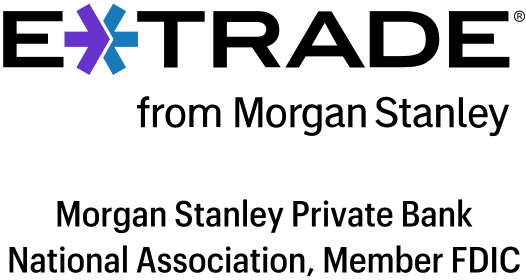What Is a Regional Bank?
A regional bank is a midsize bank often characterized by serving a specific region.

Many, or all, of the products featured on this page are from our advertising partners who compensate us when you take certain actions on our website or click to take an action on their website. However, this does not influence our evaluations. Our opinions are our own. Here is a list of our partners and here's how we make money.
A regional bank is a bank with assets between $10 billion and $100 billion, according to the Federal Reserve. Based on their assets, regional banks are midsize banks: They’re bigger than community banks but smaller than national banks.
Though asset size is how the Federal Reserve defines regional banks, it’s not the only way to earn that designation. Banks with assets greater than $100 billion can also be considered regional banks based on the area they serve — generally, a specific and limited region.
What does a regional bank offer?
A regional bank typically caters to its local communities and offers many of the same products and services as a national bank — for consumers and small businesses. Here’s what you may expect to find at a regional bank:
Checking accounts.
Savings accounts.
Certificates of deposit.
Personal loans.
Small-business loans.
Lines of credit.
Credit cards.
Mobile apps.
Some regional banks may require that you reside in a certain area to be eligible to open an account, but others are available nationwide online.
» ALSO SEE: What is a bank?

Member FDIC
Forbright Bank Growth Savings

4.00%
$0

Member FDIC
Axos ONE® Savings

4.51%
$1,500

Member FDIC
Varo Savings Account

5.00%
$0

Member FDIC
E*TRADE Premium Savings

3.75%
$0
Regional banks in the U.S.
Of the financial institutions supervised by the Federal Reserve, regional and community banks make up the biggest number.
You can determine whether a bank is a regional bank by checking its website to learn what areas it serves. If you’re looking for a financial institution that fits the Federal Reserve’s definition of a regional bank, look at its list of large commercial banks to find the ones with total assets between $10 billion and $100 billion.
Here are some regional banks that NerdWallet has reviewed (select the bank to see our review):
Associated Bank: Primarily in the Midwest.
Barclays Bank: Online-only in the U.S.
CIBC Bank: Primarily in the Midwest.
Customers Bank: Primarily on the East Coast.
TD Bank: Primarily on the East Coast.
» ALSO: See the largest banks in the U.S.
Pros and cons of regional banks
A regional bank can be a sweet spot between community and national banks, offering some of the benefits of each. Here are some of the advantages and disadvantages of banking with a regional bank.
High concentration of branches in your area.
ATMs and branch locations beyond your immediate area.
More services on offer than at a community bank (such as mobile banking).
Localized, more personal approach than at a national bank.
Fewer branches and ATMs than a national bank.
Fewer products and services than a national bank.
Less localized focus than a community bank.
Federal Reserve regional banks
In addition to customer-facing regional banks, there are also a dozen regional banks that serve as operating arms of the Federal Reserve. Rather than servicing consumers, they supervise state banks that are part of the Federal Reserve system. Having banks in different regions in the U.S. helps the Fed ensure that the local economic conditions are accounted for when making monetary policy decisions for the country.
» MORE: What is the Federal Reserve?
Regional bank vs. national bank: What’s the difference?
Regional banks and national banks can be similar in their account and product offerings, but a regional bank is different from a national bank in a couple of key ways:
A regional bank generally has smaller assets than a national bank.
A regional bank will usually have a focus on a specific area of the country (though it can have locations in multiple states).
Unlike regional banks, national banks generally have branches in more areas and greater asset sizes. For example, TD Bank, which has locations throughout the East Coast including Connecticut, Florida and Washington, D.C., and has assets of about $36 billion, is a regional bank, while Chase is a national bank with branches in almost every state and about $3.4 trillion in assets.
» COMPARE: NerdWallet’s picks for the best national banks
Regional bank vs. community bank: What’s the difference?
The Federal Reserve differentiates between regional banks and community banks by their asset sizes: Regional banks are those with assets between $10 billion and $100 billion while community banks are those with less than $10 billion in assets.
Community banks are generally more localized than regional banks, with fewer branches. They usually have expertise in their local community, to whom they provide traditional banking services for personal and small-business accounts.
» LEARN: What is a CFDI?
Regional bank failures in the news
In 2023, several regional banks collapsed, including Santa Clara, California-based Silicon Valley Bank, New York-based Signature Bank and San Francisco-based First Republic Bank. Customers of those failed banks were made whole, thanks to the Federal Deposit Insurance Corp. The FDIC provided above and beyond its standard insurance limit of $250,000 per depositor, per bank, per account category, making sure depositors had access to their funds even if they were over the limit.
Since the 2023 bank crisis, regional banks continue to face two challenges: a high-rate environment, where banks are paying more in interest on deposit accounts than in previous years, and a shaky future for banks' commercial real estate loans for office buildings. The latter is typically an income source for banks but demand for these loans has significantly dropped since the coronavirus pandemic started in 2020. Additionally, if current real estate loan customers default on their loans, those losses will be difficult for banks to recover from, since they've been paying out more money in interest on deposit accounts.
These factors make regional banks vulnerable to failure — and recently, the outlook for some regional banks has started to fall. In February 2024, the rating agency Moody’s downgraded New York Community Bancorp. to junk status. In March, the rating agency S&P Global downgraded the outlook for five banks (some of which are banks for small to medium businesses) from stable to negative status: First Commonwealth Financial, M&T Bank, Synovus Financial, Trustmark and Valley National Bancorp.
Despite these challenges, regional banks that are insured by the FDIC are safe places to keep your money as long as your deposits fall within the FDIC insurance limits.










